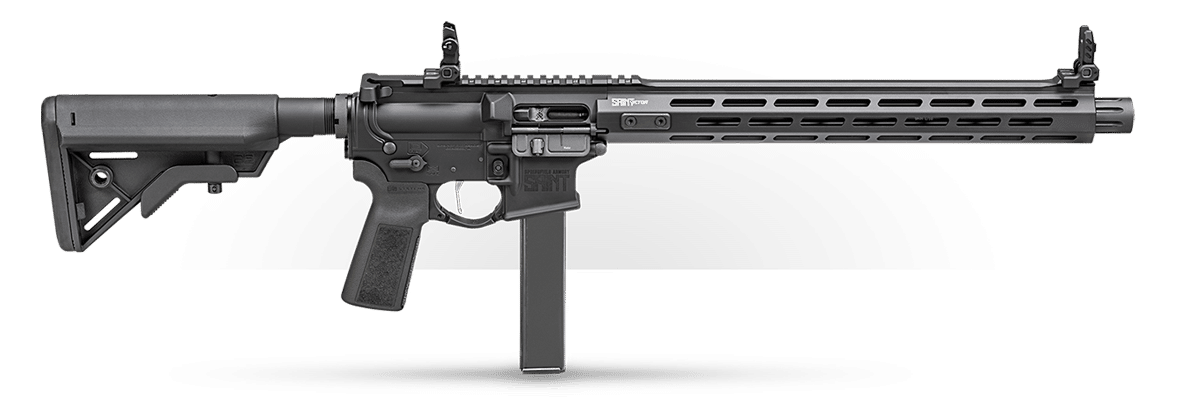What Is a Pistol Caliber Carbine?
March 2nd, 2024
6 minute read
Pistol Caliber Carbines (or PCC) are all the rage these days it seems with makers emerging with their own take on the design to satisfy the high demand. But how do we define what a PCC actually is?
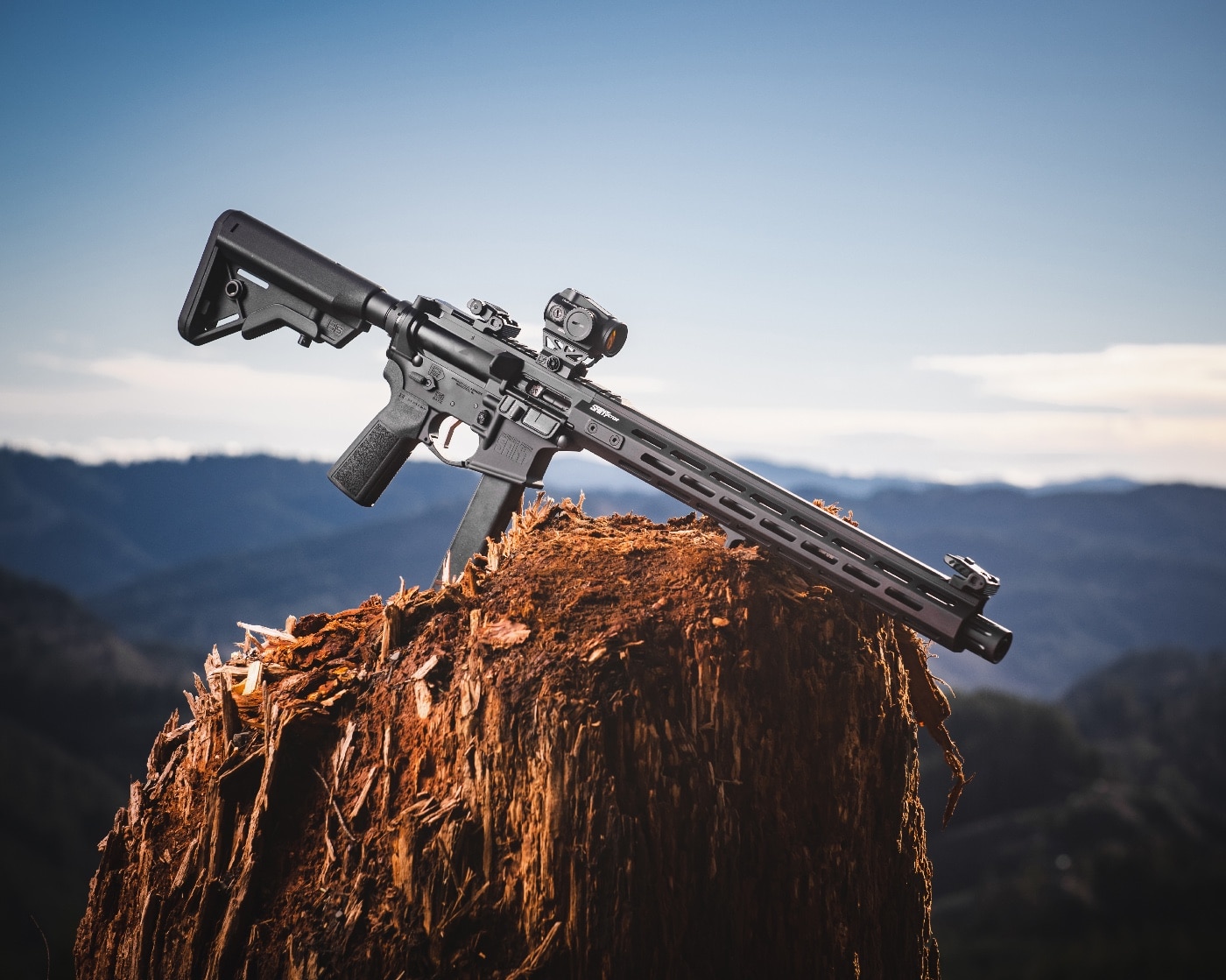
Pistol Caliber Carbine: A pistol caliber carbine is a rifle chambered for a cartridge typically associated with a handgun. Modern PCCs are often semi-automatic rifles chambered in 9mm with barrels of 16″ — 16.5″ in length. Short-barreled rifle (SBR) versions of PCCs are also popular.
[Looking for a short barrel rifle? Read Paul Carlson’s article on the best SBR for additional information.]
Origin of the Pistol Caliber Carbine
In reality, the PCC is not a new concept. These firearms have been around in common use since the debut of reliable self-contained cartridges in 1873 — when the famous 1873 lever action repeating rifle chambered for the new .44-40 brass-cased centerfire cartridge was introduced. Simultaneously, the .44/40 1873 Peacemaker revolver was launched. These two arms are commonly considered “the guns that won the West.”
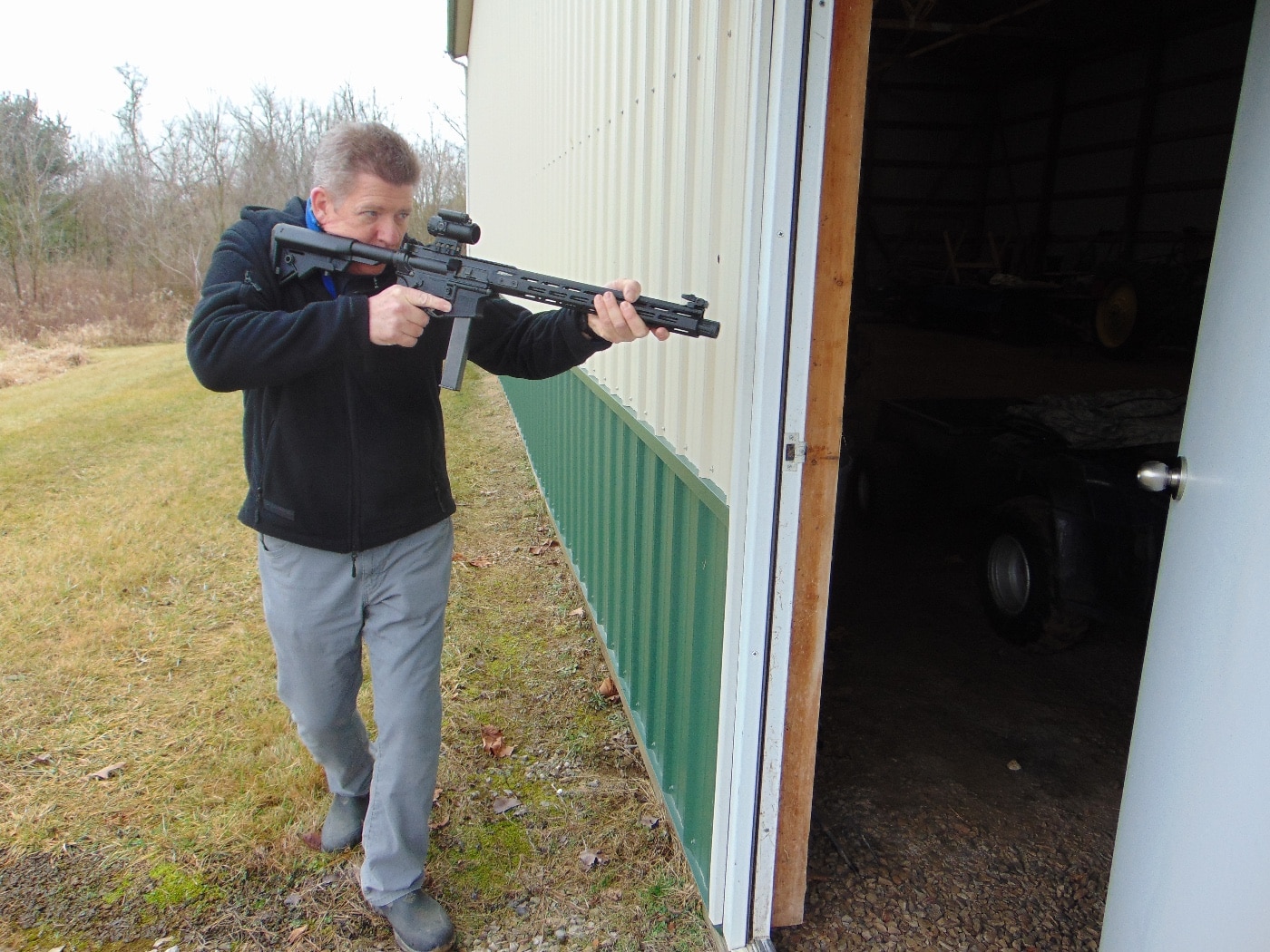
While I realize that technically it was the .44 Henry Rimfire cartridge that was first PCC cartridges since the ammunition was available both in a rifle and two types of revolvers. However, the popularity of that .44 round in rifles and handguns bore no comparison to the explosion in popularity that followed the introduction of the .44-40 cartridge.
Frontier life was obviously hard, and owning simple, reliable and effective arms were essential — especially long guns and handguns intended for self-defense. Here, the .44-40 in the 1873 rifle and 1873 revolver excelled in popularizing the PCC concept. This pistol cartridge duo became popular not only with frontiersmen, but also with outlaws, lawmen, Indian tribes and legendary groups like the Texas Rangers.
They were a huge success well into the 20th century and continue to be popular with firearms used by cowboy action competitors — although the .44/40’s popularity has been eclipsed by rounds like the .45 Colt and the more modern .357 Magnum/.38 Special chamberings that are easier to reload and are less expensive than the tapered .44/40 case.
Fast Forward
My very first experience with a modern pistol caliber firearm came when I was still a patrolman with the City of Reynoldsburg, Ohio Police Department. Around 1986, I came across and purchased a semi-auto 9mm rifle — hoping to eventually carry it as a patrol carbine.
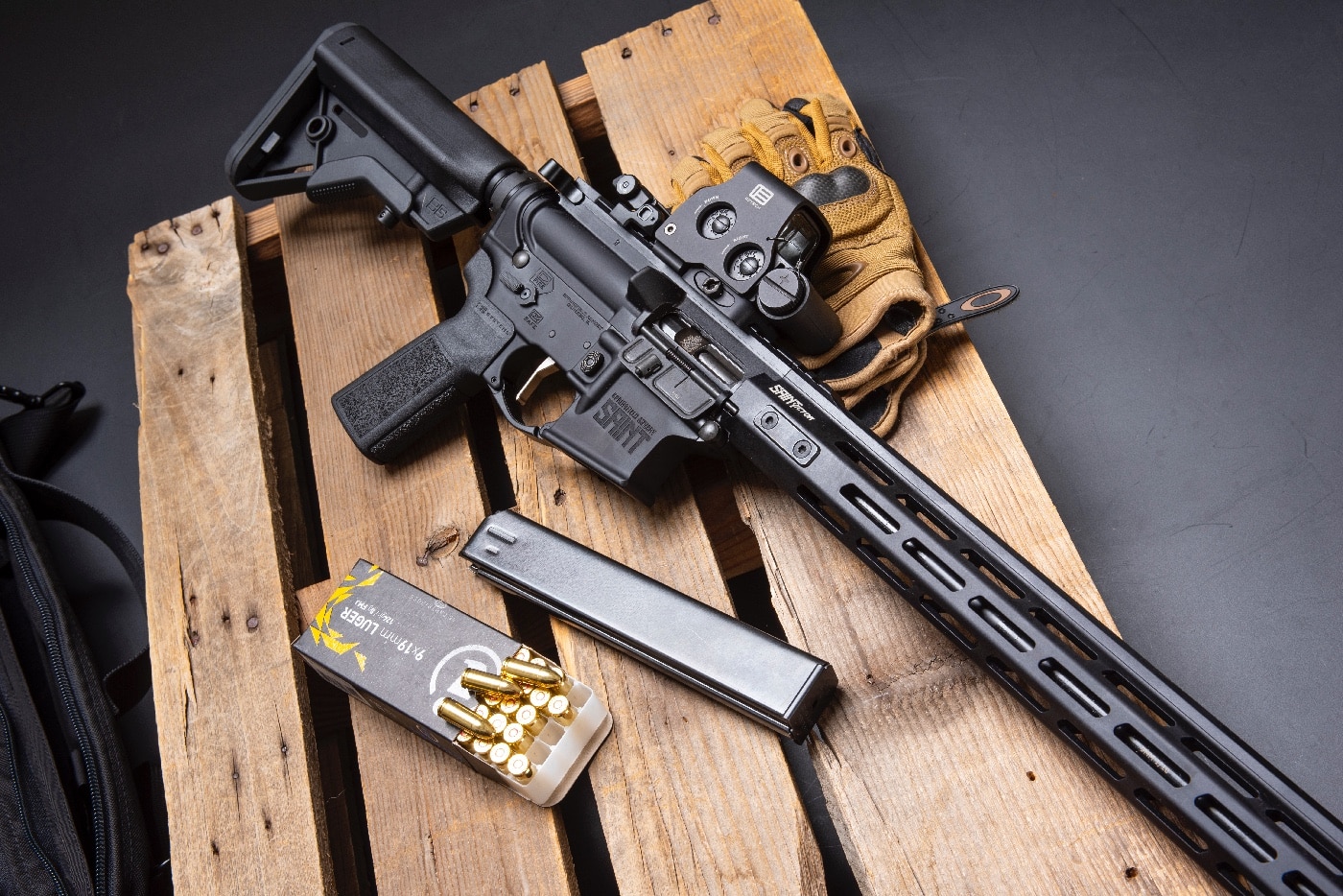
Also available in .45 ACP, that carbine — which had been introduced as an outdoorsman’s gun to be used while camping or engaged in other outdoor activities — performed well in that role as well as additional roles as a property and home defense rifle. But its main contribution was introducing the PCC to the 20th century and making that concept popular.
That 9mm carbine could be fed by the magazines of a very common and popular pistol available those days, and one carried by many police officers. The .45 ACP version fed from 1911-pattern magazines. Although popular, production of that rifle ended in 1999.
Today’s PCC
Today’s pistol-caliber carbines are incredibly popular — and for several good reasons:
1. PCCs can be accurate and effective out to 100 yards and beyond with high-quality 9mm loads — particularly those topped with 124-gr. bullets.
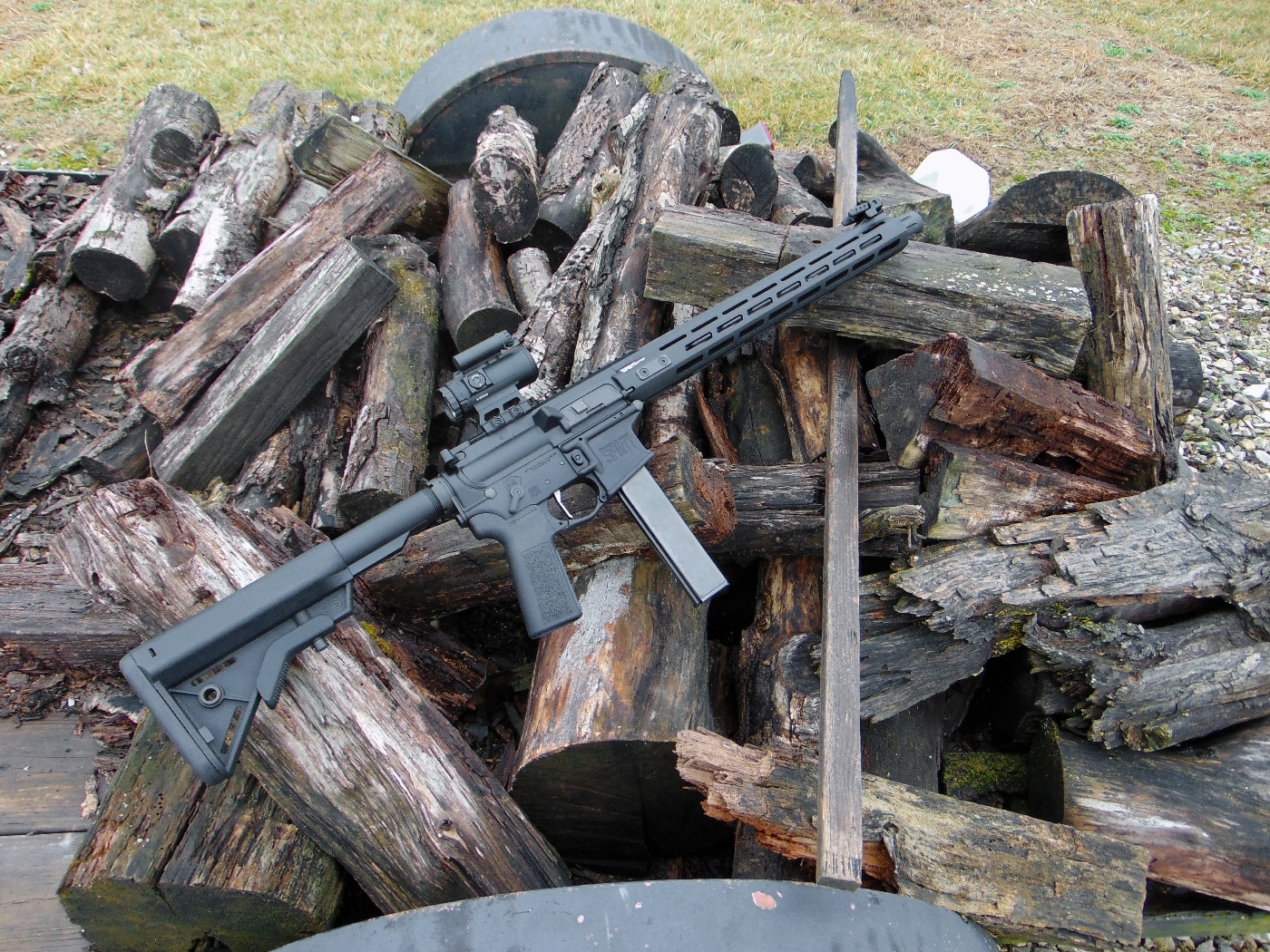
2. Pistol carbine actions are generally blowback operated, which are the simplest and one of the most reliable operating systems available for the relatively low-pressure 9mm cartridge. They are great for shooters who want an AR-15-type weapon with less maintenance effort.
[Be sure to read Sam Weitzner’s article about 9mm AR blowback systems.]
3. Recoil and muzzle blast levels are much lower for 9mm PCCs than the muzzle blast and flash generated from many rifle calibers like 5.56mm.
4. Operating controls of most PCC’s are similar to — or exactly like — those found on 5.56mm AR’s, making transitioning between the two different systems a snap.
5. FMJ 9mm ammo costs less than FMJ 5.56mm ammo. Looking online today (January 3, 2024), I priced 124-gr. FMJ 9mm practice ammo and 55-gr. FMJ .223 practice ammo. Calculating the per-round price, I found that the Federal 124-gr. FMJ ammo was priced at 0.29 cents per round, while PMC 55-gr. FMJ .223 caliber ammo was .41 cents per round. The 9mm currently represents more bang for less bucks.
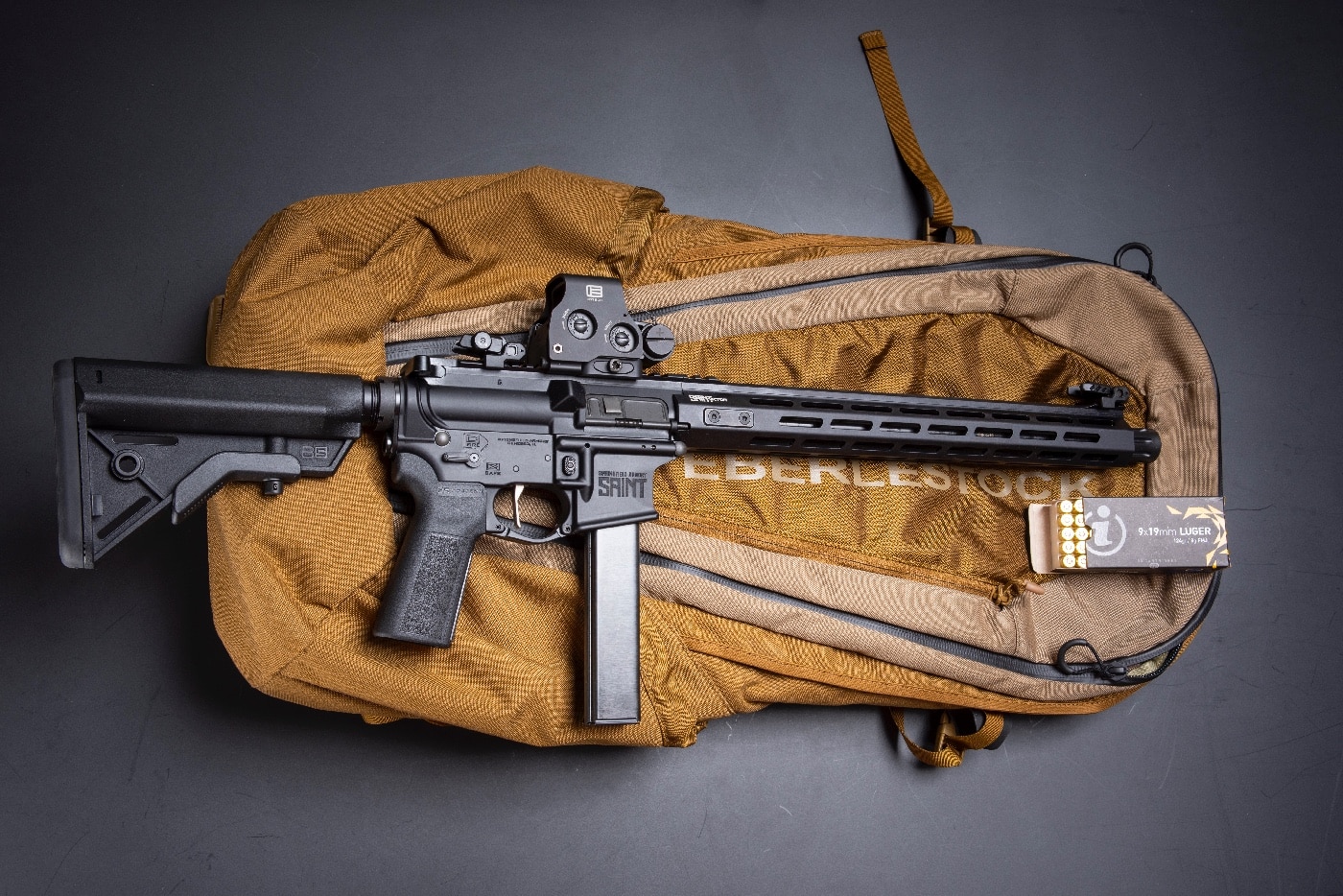
6. The power potential of the 9mm round increases due to increased velocity when fired from the commonly seen PCC carbine barrel length of 16”.
SAINT Victor 9mm — Perfect Handgun Companion?
Springfield Armory has its own PCC in the SAINT Victor 9mm, a carbine I recently had the opportunity to review. I immediately noted that it feeds from a Colt-pattern 32-round 9mm magazine. I was surprised that it did not feed from a Springfield Armory handgun 9mm magazine, so I reached out to Springfield Armory’s Mike Humphries for some clarification.
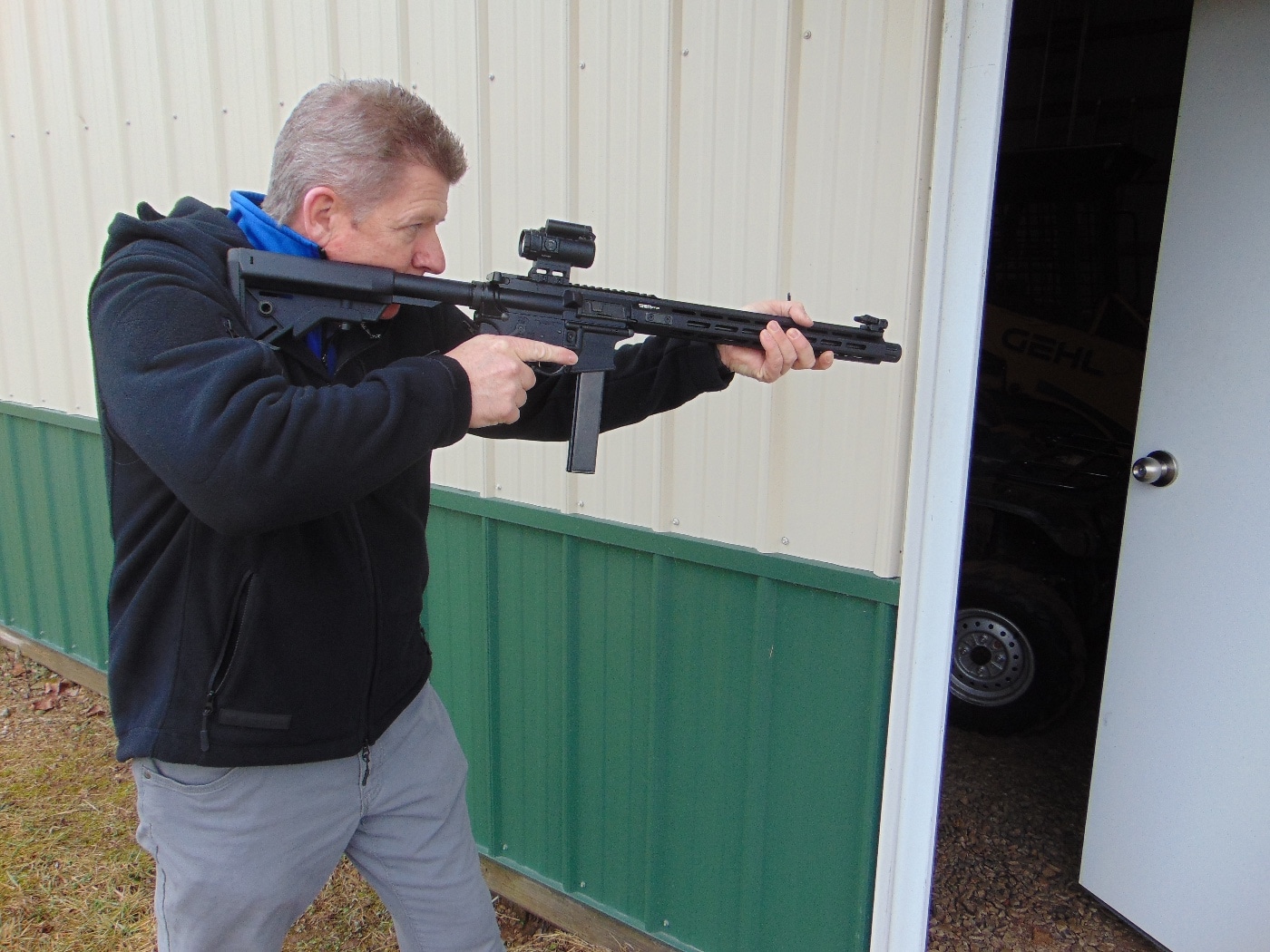
Humphries explained that the Colt-pattern magazines were “durable and proven, easily available, worked (well) with the slide lock, and had a vertical orientation (and not angled like a traditional pistol magazine).”
What I also found out about the SAINT Victor 9mm Carbine was that new Colt-pattern 32-round magazines from sources like ProMag, DuraMag and Springfield Armory are not particularly expensive or difficult to locate. Prices online that I found ranged from $15.99 to $32 each — which certainly won’t break the bank.
Springfield Armory 9mm Victor Carbine Features
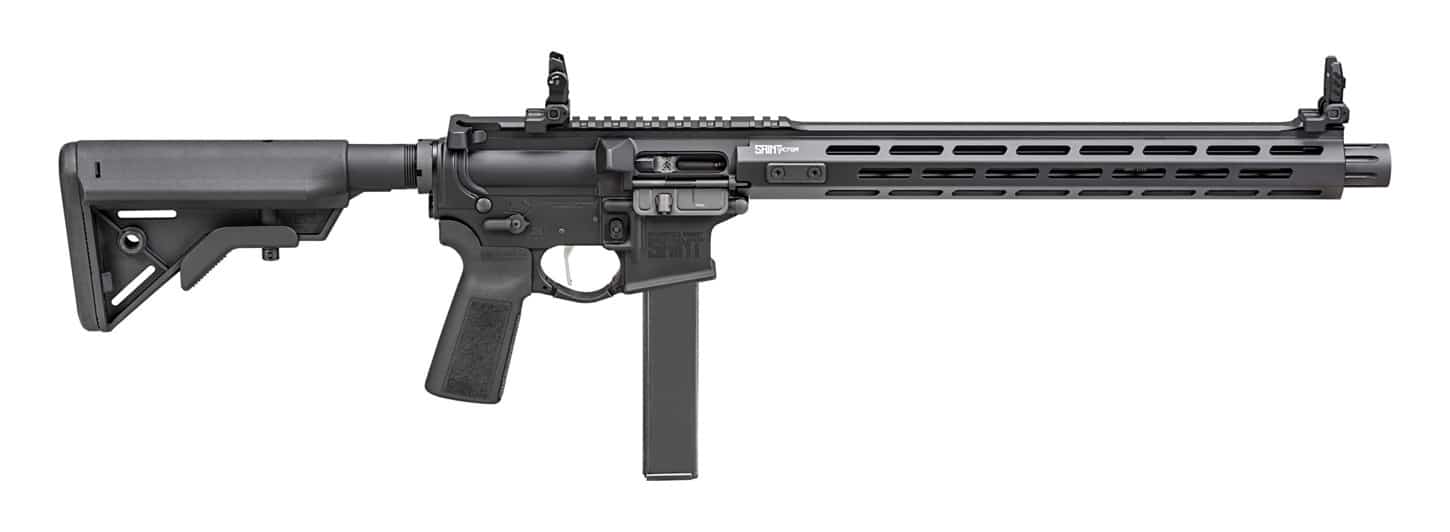
| Chambering | 9mm |
| Lower Receiver | Dedicated 9mm-Forged 7075 T6 Aluminum, Type III Hardcoat Anodized, Accu-Tite Tension System |
| Barrel | 16″ CMV, Melonite, 1:10 |
| Upper Receiver | Forged 7075 T6 Aluminum, Type III Hardcoat Anodized |
| Bolt Carrier Group | 9mm Blowback |
| Handguard | Aluminum Free Float w/ SA Locking Tabs, M-Lok |
| Stock | B5 Systems Bravo |
| Grip | B5 Systems Type 23 P-Grip |
| Safety | Ambidextrous |
| Trigger | Nickel Boron Coated Flat |
| Weight | 6 lbs. 15 oz. |
| Length | 31.75″–35″ |
| MSRP | $1299 |
Hands-On with a Pistol-Caliber Rifle
I tested the Springfield SAINT Victor 9mm Carbine with a Lucid Optics P8 4x Prism Optic with Blu reticle. I think it is absolutely perfect for a PCC weapon of this type. It is compact, yet with enough magnification to handle targets within the range of a carbine-fired 9mm projectile.
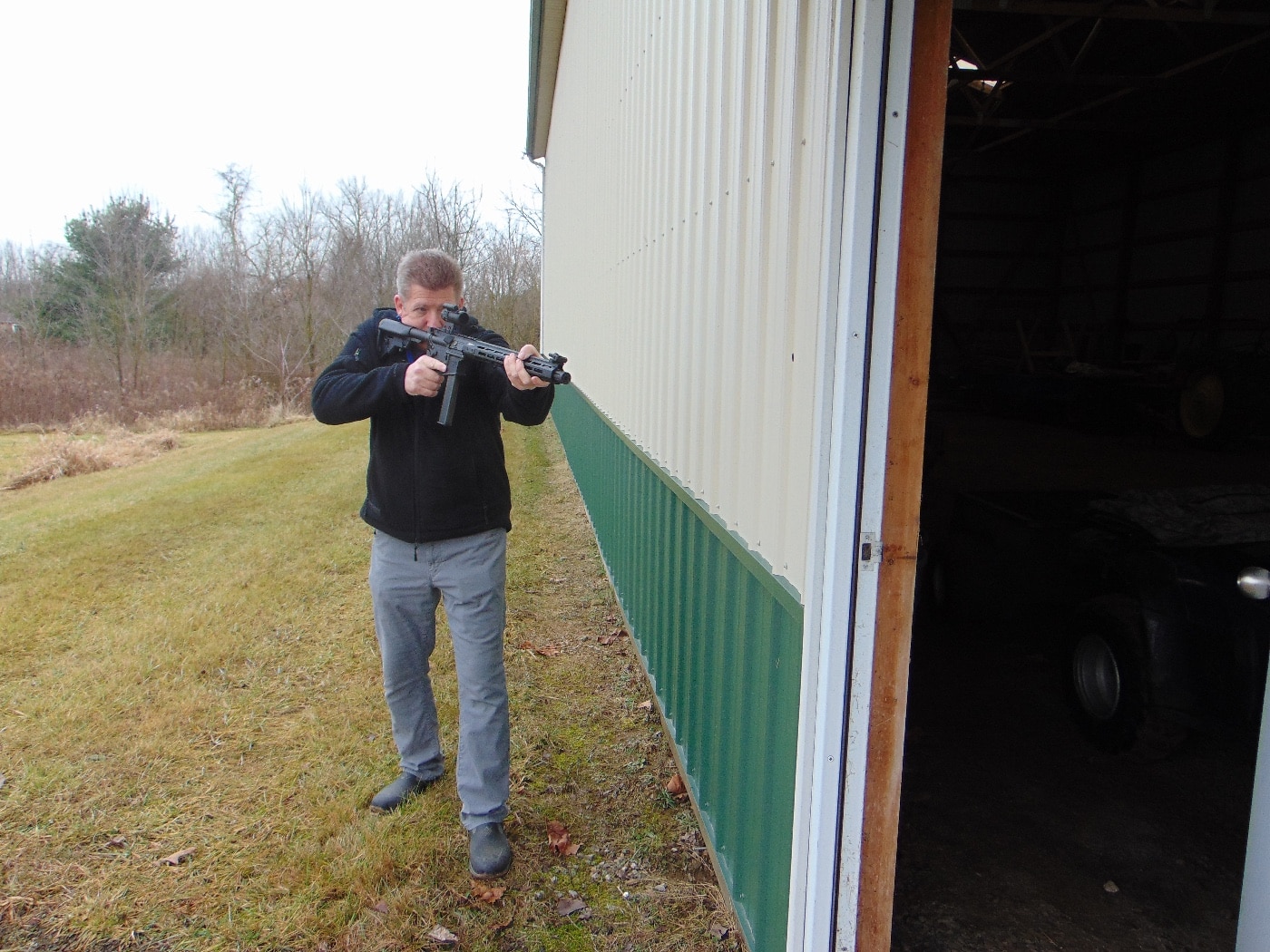
After my shooting evaluation, I can say with certainty that Springfield Armory SAINT Victor represents an excellent 9mm PCC option. It’s accurate and very easy to shoot, even for smaller-statured shooters. Muzzle blast is quite a bit tamer than that from a 5.56mm rifle. It would make a great training arm or an excellent utility rifle in its own right. I had surmised correctly that the folks at Springfield had done their homework and produced a PCC that you could stake your life upon under the worst circumstances.
Sure, the 9mm cartridge doesn’t have near the punch of the 5.56mm, but it is readily available and offers simplified shooting logistics. The 9mm PCC has a lot to commend it for the average shooter who might be recoil or muzzle blast intolerant. It is useful for self-defense, or for popping the wayward coyote.
Editor’s Note: Be sure to check out The Armory Life Forum, where you can comment about our daily articles, as well as just talk guns and gear. Click the “Go To Forum Thread” link below to jump in!
Join the Discussion
Featured in this article
Continue Reading
Did you enjoy this article?

 75
75




